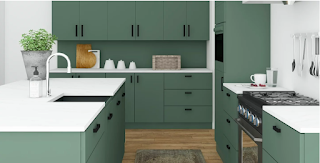Why Form Should Follow Function In Interior Design?
Form in Interior Design
‘Form follows function’- a mantra parroted by interior designers for the past 120 years was coined in the 19th century by Louis Sullivan, the American architect, in his famous article named ‘The tall office building artistically considered.
‘Since then, the phrase ‘form follows function’ has followed in the interior design schemes of interior designers. The most successful professional interior designers understand the relationship between form & function and how form follows function in the interior design process.
Basic Elements of Interior Design
1. Color is the use of different values of color to produce patterns. These patterns can be in sets or used individually.
2. Form is the indication of three-dimensionality by the sculptural use of two-dimensional shapes that interact with textiles, lighting, and all other design elements.
3. Light is an illumination that comes from a lamp or a window. It can be direct, indirect, or reflected light.
4. Line is any mark on a surface that divides space into two or more areas to create a visual pattern that creates form. The line can also be used as a way to separate one area from another by creating borders for rooms in the design being examined.
5. Patterns created through these lines create specific color and lighting values around each area that can be separated from another area as well as define it as part of a larger whole in an interior design environment.
6. Texture can provide variety via repetition of common elements within spaces or across spaces and their boundaries, creating accents and defining different areas of an interior design space within the overall integrity of the design concept.
7. Space refers to the use of undivided space or the use of multiple spaces, which form the focus for the overall interior design.
8 Reasons Why Form Follows Function In Interior Design
1. Does not clutter the space
You should invest in home decor wisely and only purchase the pieces that add to the usability of the space. For example, adding extra showpieces or rugs might be unnecessary in the living room. While a showpiece can spruce up the space instantly, however keeping multiple showpieces can make the space feel crowded.
2. Makes it liveable
Now imagine if you have a habit of waking up every morning and going to the kitchen first. But if your kitchen is placed far from your bedroom, you might not find it comfortable doing this every day when you wake up. You would not want to continue living in the same home.
3. Makes the property more valuable
Creating properties having functionality and not just aesthetics adds more appeal to the buyers. A property that has a well-thought floor plan and aesthetics that meet the functional requirements of the space act as value pushers in the market.
4. Functionality remains unchanged with time
The aesthetics or ornamentation of the property keeps changing with the changing times. However, the functionality of the space is unlikely to be changed so easily. So focussing on the functionality of the space rather than on accent pieces will add more value to your property.
Visit here to read more details.




Comments
Post a Comment